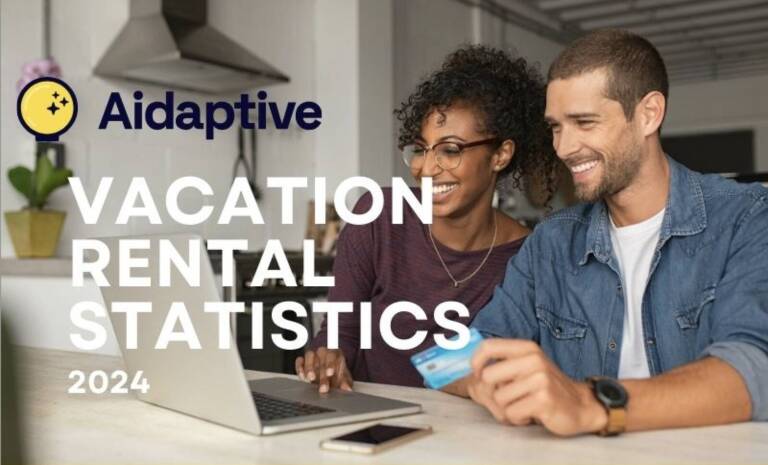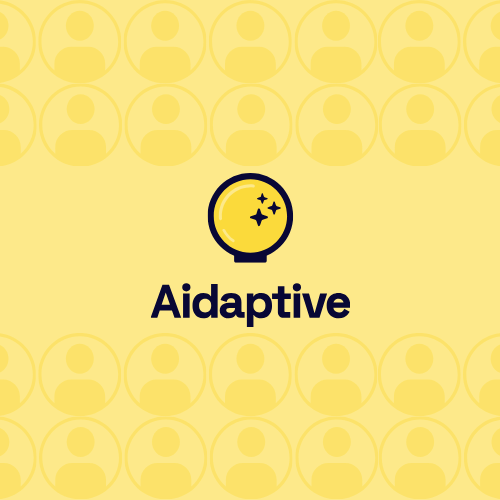The Pains of Product Recommendations
If I’m being honest, we recently heard from a Shopify Plus agency rep on their clients: “yeah, eCommerce product recommendations suck.”
We’ve talked to eCommerce managers, digital marketers, marketing / D2C leadership, and analysts.
We’ve researched the consensus on product recommendation tools.
We’ve seen them working on websites (and seen them not working so well…)
So, why do they “suck”?
We’ve compiled our learnings.
Below we’ll break down the core issues that seem to come – never-ending – with typical product recommendation tools.
Why So Important?
First, let’s spend 30 seconds getting on the same page about why it matters.
(1) Product recommendations are revenue-generating touch points in your customer’s buying journey.
You lose money if they aren’t good enough. Period
(2) Your customer only needs a few seconds on your site before deciding it’s not a fit for their interests.
Product recs create relevance between your products and the person’s interests. Relevance wins.
(3) Shoppers shop. (They browse for products; they don’t just buy.) You must aid their product discovery.
Product recommendations give shoppers an intelligent way to do that discovery. Both early in their search, and in the final moments.
(4) In Cart upsell recommendations create more sales. If you averaged +$5 upsell per order on an AOV of $50, you’re automatically increasing monthly revenue by 10%.
Relevant product recommendations drive more upsells.
I think it’s been 30 seconds, so let’s move on. Product recommendations are critical.
The Challenges
Below, we go through three categories of challenges:
- Performance
- Poor intelligence / experience
- Workload
And within each, give specific issues we’ve seen or heard.
Performance
Where is the promised performance!?
Product recommendations exist to show products to customers that they will find relevant.
This of course improves customer experience and sales performance.
When that lacks – the recs are wack. (That rhymes.) Here are some specifics:
1. Doesn’t Increase Conversion Rates
At the end of the day, the biggest reason to use product recommendations is to convert more users into purchases.
You need to replace old product recommendation tools that aren’t having a great impact on your CTR and CVR.
Performance could be poor for many, many reasons. However, the two most frequent reasons tend to be these:
- A) the tool doesn’t do any true “predictive personalization” with machine learning, or
- B) the personalization needs manual upkeep with admin work.
2. Give Me Better Upsell & Cross Sell
Upsell is a huge opportunity when customers are shopping – namely when they’re in-cart or checking out.
The products that get served in-cart from legacy product recommendation tools are based on simple logic. In fact, they often push one of three options:
- Same Category or Tag: if the products are tagged in the same group
- Top products: they just push a few of the best performing products
- Often purchased together: this looks at past shopping cart bundles, not the shopper
(Note: There are important use cases for the above 3 options, but use where appropriate.)
These can end up not driving upsells because they don’t actually predict and display what that unique person has shown interest in.
3. No ROI: Costs are Too High
What’s the point of paying for a tool if it doesn’t produce results that at least cover their costs?
It’s a no brainer. Remove that tool.
Obviously many tools help workflow, so the ROI isn’t as obvious.
But with product recommendations, you should be confident of that impact.
4. Recs Only Display Our “Top 10 Products” on Repeat
“Hello technology solution, please use the top 10 performing products and serve those at random to every shopper.”
Oh, is that not your ask for your product recommendation tool?
Of course it isn’t!
Top performing products already sell.
I want to show products that are relevant to this customer.
Of course “Top Product” recs get clicked… but you’re not only trying to sell 10 products when you have thousands! Relevant discovery is part of the shopping journey.
Low App Intelligence Ruins Customer Experience
Product recommendations create challenges when they aren’t built with enough intelligence or functionality.
Here are some pains:
5. Slows Down Site Speed
As soon as an app starts deteriorating site speed and performance, it has got to go.
We know the stats on bounce rate with slow site speeds. So frustrating.
We’re better than that. Our tools should be too.
6. Doesn’t Match Site Theme
Good software development these days is expected. If your tool doesn’t match product recommendation CSS (format, font, etc) to the theme of your online store, you’re sacrificing control of your brand image.
For you: it’s frustrating.
But for your customers: they simply see your store as poorly managed.
7. Doesn’t Remove Unavailable Products
Product recommendation tools that lack the sophistication to exclude non-applicable products – out of stock, still in “Draft”, or are otherwise not available – are losing you money.
It is an obvious and intuitive functionality: exclude products that can’t be purchased right now! (We have heard plenty of frustrated marketers complain about this.)
It’s a pretty bad look if a shopper clicks on a product – only to see it’s out of stock.
“Why is this store wasting my time?” -Maggie the example shopper.
8. Does Not Truly “Personalize”
A product recommendation app that doesn’t actually personalize the recommendations to the individual shopper is missing an opportunity: for better experience and better performance.
Personalization isn’t as simple as: IF: Shopper in Chicago, THEN: Display Warm Clothing.
That doesn’t take into account what the customer likes.
It doesn’t take into account anything except geography-based assumption.
Predictive personalization uses machine learning to understand shopper affinity and intent, and then recommend the right product for that circumstance: right person at the right time.
Legacy tools tend to be lightweight and use basic rules.
When customers aren’t treated individually, they are far more likely to hit back and search elsewhere. It’s frustrating to have a recommendation tool not recommend per user.
Workload
Product recs should be high-value and easy to use.
A big workload wastes time, and manual upkeep tends to lower performance over time. Here are some examples:
9. Too Much Work to Set Up
We’re all familiar with the apps that you install, make a few clicks, and it just works.
It’s a beautiful thing. Shopify has quite a few of these.
But the opposite case also happens frequently.
When you purchase a suite of products – or a tool with a lot of power, but with a correspondingly high amount of lift to get setup – you need dedicated resources. Time. Energy.
For a critical system like CRM, eCom Platform, or Marketing Automation, this is expected and budgeted. You even have project managers and full-time admins for the job.
But for something as important and straightforward as product recommendations, a complex setup is frustrating.
10. Poor Customer Support
Problems always arise with technology. Even your product recommendations tool.
Good customer service and support is critical.
A “CS” team that is unresponsive or overly generic can hurt your performance, sure. But even worse, it’s mentally taxing to deal with.
11. Requires Manual Management and Upkeep
This one is interesting, so we’ll tell a short first-person story:
I’ve been using a big personalization tool across my site. It gives me power to control specific weights, levers, and priorities within my product recommendations widgets.
I’m experienced in eCommerce and digital marketing. I have strong intuitions about how to adjust and prioritize levers for my customers’ needs. I’m good at making changes to meet weekly, monthly, or seasonal goals.
So, I set up intelligent personalized product recommendation rules.
But then I don’t remember to come back and adjust next week. Or next month. Or season.
Turns out, I’m also busy. Intelligent product recommendations are something I need to automate. It’s taking time away from other priorities.
Here’s the takeaway:
While a customizable tool may be very easy-to-use, intuitive, and pretty – it takes time.
And that’s your most important asset.
12. Requires Analysis and Defining Rules & Logic
When product recommendation tools allow marketers to define segments and setup rules, the team should run some numbers to validate their logic.
That’s data analysis work.
Even if the team wants to skip the numbers, there’s the thinking process, discussion, and debate to pick good rules for the right segments.
That’s mental analysis work.
If you’ve got the time, it can be an interesting exercise – even fun and engaging. I personally like data analysis.
If you don’t have time – it’s just more work.
Bonus: Not Customizable Enough
Many teams focus heavily on product recommendations – after all, it’s a vital revenue touchpoint in the shopping adventure.
Some of these teams prefer to control everything. They want to spend focused time making tweaks, adjusting weights, and looking at impact.
If your product recommendation tool doesn’t have enough customizability – if you don’t have all of the knobs, inputs, levers, and buttons – that team is limited.
What they need is control. Feeling like you don’t have control: that’s frustrating.
How to Overcome These Challenges
The purpose of this post is to share the core causes of pain and frustration around product recommendations.
These customer touchpoints are high-value, and these pains impact both our emotions and our top line revenue.
Do you have other challenges you’d like to discuss? Give us a shout.
How can you overcome these pains?
A predictive personalization engine that offers predictive recommendations can seamlessly fit into your eCommerce store and automate the process with the highest conversion possibilities.
Want to learn more about predictive recommendations? Our team would love to talk more about what you’re doing now and how we can run a test to make sure your performance is the best it can be.


